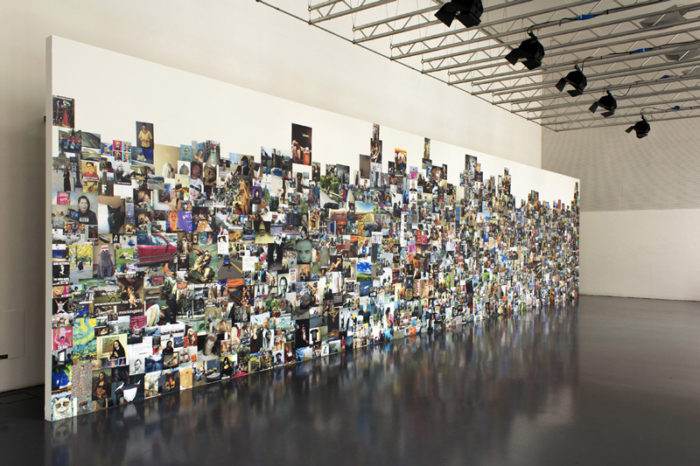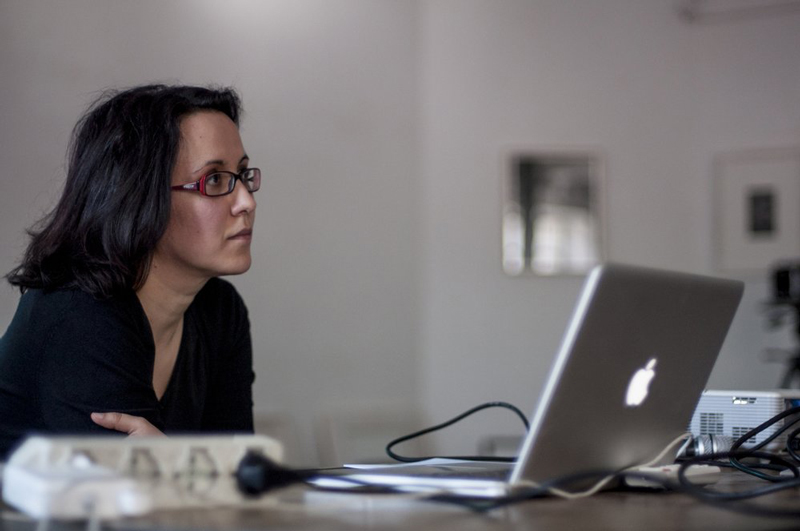
Valentina Tanni: “Curating represents a research methodology”
#curator #interview #Valentina TanniBy Nicola Mariani
Curator, art critic and teacher, Valentina Tanni is an Italian expert in new media and digital art. For nearly two decades, she has studied the relationship between art and new technologies, dedicating special attention to online culture and the ontological status of the image in the contemporary age. Amongst other things, she works on important editorial activities and is the author of dozens of articles and essays. She is the founder of Random Magazine (one of the first online magazines entirely dedicated to net art) and was the Editorial Director of FMR (Franco Maria Ricci) online. In 2011 she was involved in the foundation of Artribune, an Italian online editorial project. She is currently part of the Board of Directors and Video Content Manager of Artribune.
Valentina also teaches Digital Art at the Politecnico di Milano and Digital Cultures at NABA (Nuova Accademia di Belle Arti) in Rome. For many years she has been investigating the universe of amateur cultures, and in particular those that are born online. Her interest in this specific field of research is reflected both in her writing and in the exhibitions that she curates. In her opinion, curating is essentially a “research methodology”. Through curating –she says- a theoretical concept is transformed into a space of “unparalleled knowledge and growth”. As she herself affirms, in the interview below, “my exhibitions are always born from a conceptual reflection that, in turn, emerges from the observation and study of the artists’ work”.
In this interview with Valentina, we address a variety of issues: from the changes unleashed in the art world by the greater availability of technology (that is becoming more and more popular and accessible), to the role that curating plays nowadays in the art system. She also reflects on the difference that exists between the Internet of the mid 1990s and the Internet of today, and goes over some of the most significant exhibitions she has curated up to now.
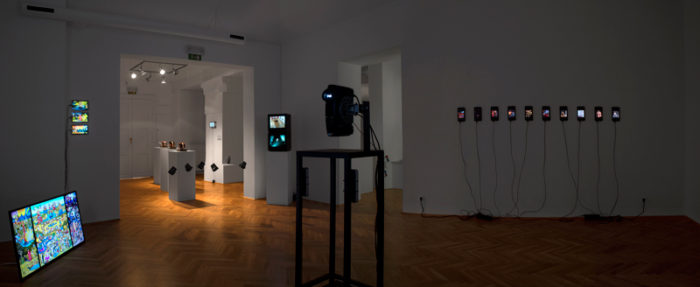
“Stop and Go. The Art of Animated Gifs”, curated by Valentina Tanni and Saverio Verini. MGLC – International Centre of Graphic Arts, Ljubljana, photo DK Aksioma.
Since the end of the nineties, you have studied the relationship between artistic creation and digital technology. How has this relationship changed over the last two decades, in your opinion?
Artists have always used technological tools in unconventional and unpredictable ways, and in that respect things haven’t changed. The free and critical approach to devices, both hardware and software, is a common thread that has always characterised this relationship, and still does today. Over the last twenty years, however, there have been some changes, that have come about, above all, because of the greater availability of tools on the market: technology is becoming more and more accessible, popular, and in daily use. This has given way to two types of evolution. Firstly, the number of artists that use technology has increased, and consequently, we have seen a greater diversification: in the different types of artwork, in the conceptual approaches, and in the aesthetics, tracing a much more multifaceted panorama than in the past. A second transformation to consider has to do with the context: the use of technology by the artists is much more accepted and valued today by the art system and educational institutions, generating a greater amount of production, exhibition and reflection.
Visual culture in the age of the Internet is an issue you are very interested in. Amateur images (which we create and consume at the same time), video games, gifs, memes and machinima are only some of the technologies that many artists use today to create their projects. Today, the visual panorama is more complex and fragmented than ever, and the artists seem to be less and less “creators” and more and more “manipulators” or “curators” of images. What is, in your opinion, the function of the artist today?
I don’t believe that we can attribute to artists just one single “function”. I believe there are infinite ways to make art, that include reusing images and languages that already exist and originate from other contexts -just as there are infinite ways for the artist and society to interact-. However, what you say is true: the visual panorama is becoming more and more crowded and complex. The boundaries that separate the artist from the public are no longer defined, and artistic behaviours have extended to the grassroots level, making the figure of the artist much more difficult to place in the past. Personally, I believe that it’s time to abandon the romantic idea of the artist as a creative genius, an almost sacred figure, like a prophet, in favour of an idea of art that is largely integrated in everyday life.
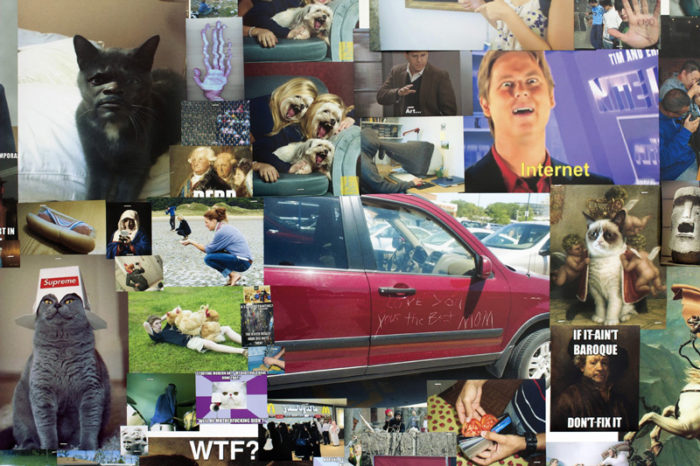
“Nothing to See Here” (detail),curated by Valentina Tanni and Domenico Quaranta. Istituto Svizzero, Milano.
Do you believe that the Internet is still the great utopian space of creative and communicative freedom it was at the dawn of its mass diffusion?
The idea of Utopia is a great driving force for human beings. It’s a kind of superpower that helps us not to lose sight of our own values, as it helps us not to stop tending towards the construction of a different and more desirable future. However, as we have already seen many times throughout history, sometimes this force is not enough to transform theory into practice, and this implies a feeling of defeat and impotence, as well as fear. The Internet has represented for a certain generation the materialisation of many dreams of universal connection, horizontality, democracy, and the emancipation from institutional intermediaries and corporate media. Over the years, however, we have been obliged to face a very different reality: the Internet is not an ideal space, it is a real infrastructure composed of hardware and software, but above all it is governed by companies and governments, and it is subjected to laws and norms, being affected by the same political and economic dynamics that rule the world offline. This kind of consciousness is becoming more and more widespread and determines, rightly so, a much darker and more pessimistic scenario. That said, I believe that in spite of the aggressive economic activity of the big corporations and the censorship and control of the governments, the Internet is still giving refuge to small but resistant spaces of freedom, interpersonal connection, and metamorphic and irregular creativity.
Boris Groys reminds us that the Internet can only work thanks to electricity. As absurd as this may seem -says Groys- the Internet cannot support an unlimited flow of information and an infinite quantity of interconnected computers, cables and servers (Going Public, 2014). For his part, Umberto Eco hypothesized the disappearance of the Internet in the near future (just as other inventions disappeared in the past, like for example the blimp or the Concorde, the supersonic aeroplane). What would a future world with no Internet be like?
In a hypothetical future characterised by such a scarcity of resources that could mean renouncing the use of electricity, the problems of survival would be so dramatic for humanity that use of the Internet would decrease rapidly in the list of priorities. I imagine a world dealing with a complete reconsideration of its own function.
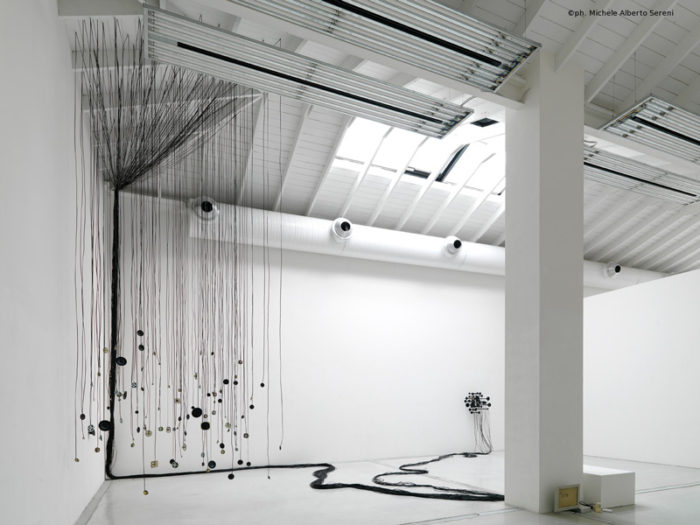
Roberto Pugliese, “Soniche Vibrazioni Computazionali”. Studio La Città, Verona, 2011. Curated by Valentina Tanni. Photo: Michele Alberto Sereni
What role does curating play within the current art system, in your opinion?
I can tell you what role should play for me, which doesn’t coincide necessarily with what happens in reality. I believe that curating has four principle functions: to preserve (meaning “to take care of” the works of art, including protecting them, if necessary, from attempts to alter or undervalue them), to mediate (to be an intermediary between the artist, the institutions and the public), to offer keys to their interpretation (of the works of art but also of the artistic practice in general), and to show enthusiasm (that’s why I can’t curate exhibitions that firstly don’t excite me).
What does it mean for you to curate exhibitions? How do you approach this kind of work?
In my case, curating represents a research methodology. My exhibitions are always born from a conceptual reflection that, in turn, comes from the observation and study of the artists’ work. Turning a theoretical idea into an exhibition, instead of a book for example, produces completely different results. The physical closeness of the works of art, their organisation in the space, the ideas that come from the interactions between different projects and, lastly, the relationship with the artist as a person: all of these aspects make curating a space of unparalleled knowledge and growth.
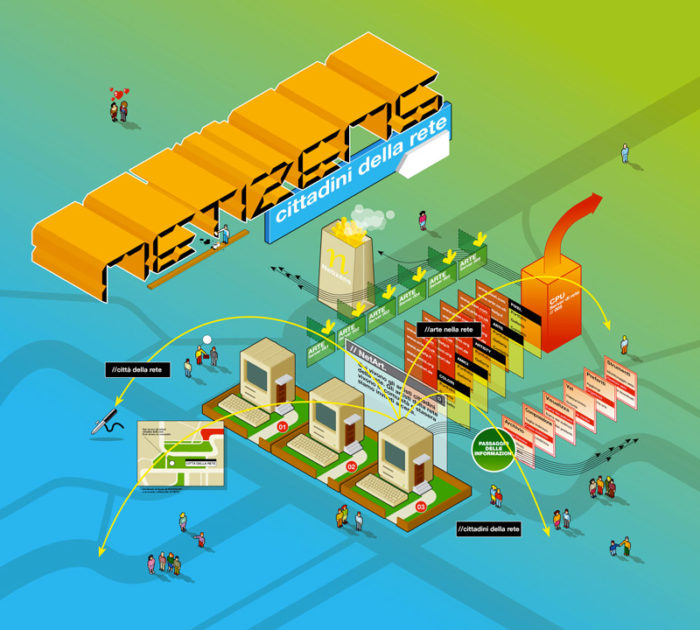
“Netizens”, curated by Valentina Tanni, catalogue cover, design by Happycentro+Sintetik, Rome, 2002.
Which project (or projects) that you have curated stands out on your path? Can you tell us about it (or them) briefly?
Considering the years I have dedicated myself to contemporary art, I have curated relatively few exhibitions. This is because I dedicate myself to this role only when I deal with a project that I deeply believe in (the rest of my time I study, write, teach and work on editorial projects). Therefore, each exhibit that I have curated represents a piece of my educational path. That’s why it is so difficult for me to choose some “favourites”.
To go some way towards answering your question, I would say: Netizens, the first exhibition I curated alone in 2002, in the Sala Uno gallery in Rome, one I am very fond of for obvious reasons. It was my first time and it was a project that I think would still be relevant today: I was talking about artists as “citizens of the Internet”, showing how one can approach the relationship between art and technology in a transversal and multi-faceted way, with pieces that referred to the culture of the Internet (at that time just incipient) in different ways, and materialised through very different objects: from the modified video games of Jodi and Cori Arcangel, to the oil paintings on canvas of Carlo Zanni, and the generative software of the Limiteazero collective and Elout de Kok.
Another exhibition that I am particularly fond of is Eternal September. The Rise of Amateur Culture, presented in Ljubljana, Slovenia, in 2014, produced by Aksioma in the Skuc gallery. It was a complex project, as much to conceive, as it was to create and communicate it. But the final result was surprising, even for myself. The universe of amateur cultures, especially those that are born online, is a field of study that I have never stopped being passionate about, and the mentioned exhibition gave me the opportunity to focus on some theoretical lines that are fundamental to my thought about this issue. I have systematised these ideas into a book that will be published at the beginning of next year.
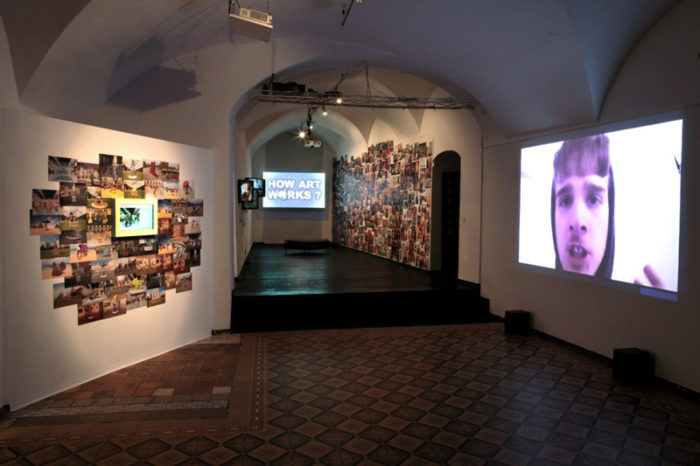
“Eternal September. The Rise of Amateur Culture”, curated by Valentina Tanni. Skuc Gallery, Lubiana, 2014. Photo: Miha Fras.
Could you mention a few artists that you consider to be particularly interesting at this time? Who would you like to work with?
There are so many artists that interest me, and it is really difficult for me to give names. Generally, I’m always attracted to artists who are able to make me think differently, blowing up the rigid and antiquated patterns that we tend to use to interpret the world around us. The trajectories of our thoughts tend to become fixed, because for our brain it’s easier to go through safe paths again and again, instead of opening new ones. Therefore, for me art constitutes the principle that obliges my mind to turn the tables and start over.








